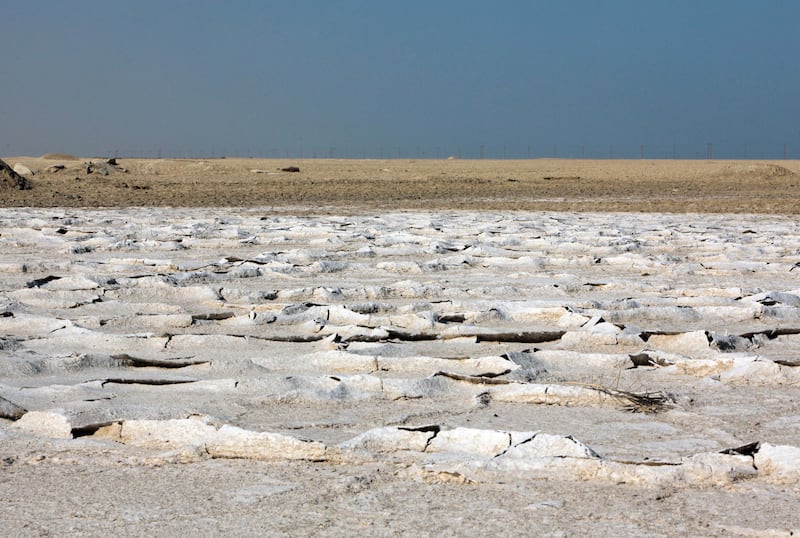A fold-out map at the frontispiece of The Anatomy of Sabkhas underscores a little-known fact about Dubai's topography, revealing that the city is built not on desert, but a sprawling salt-flat.
“Dubai is a sabkha,” says urbanist and researcher Ahmed bin Shabib, who co-authored the book with his brother, Rashid.
Abu Dhabi is similar, he says, with the city neatly slotting in between broad salt flats that are lush with mangroves.
“It is a myth that we are desert cities,” bin Shabib says. “We are maritime cities, like Venice."

Sabkhas account for more than 5 per cent of the UAE’s land mass. These flat strips of crusted saline minerals are formed as travelling seawater surfaces from underground and evaporates because of the arid climate. Large tracts of sabkhas can be found along the coasts of Abu Dhabi as well as inland, most notably in the Liwa desert.
The brothers have spent the past three years researching sabkhas' unique properties as well as their relationship to architecture. Their work also highlights how these salt flats, if tended to, could be an important instrument in the fight against climate change.
Their study was an integral component of the UAE National Pavilion at the 2021 La Biennale Architettura in Venice. The pavilion received the highest honour of the event in August, bringing home the Golden Lion Award for Best National Participation.
Published by Rizzoli, The Anatomy of Sabkhas was launched during the biannual event. However, it is now being made available to the wider public following a local commemorative launch, which took place on November 27 at Abu Dhabi’s Warehouse421.
The Anatomy of Sabkhas, which will be on sale from December 7, is replete with photographs and archival materials that break down the formation of sabkhas and list their plants and animals. It also shows the different ways salt flats are utilised across the globe, sometimes in detriment to the landscape.
“You carry sabkha in your pocket all day,” bin Shabib says. “The lithium in smartphone batteries is being mined in salt flats from Latin America. It’s horrible for the land.”
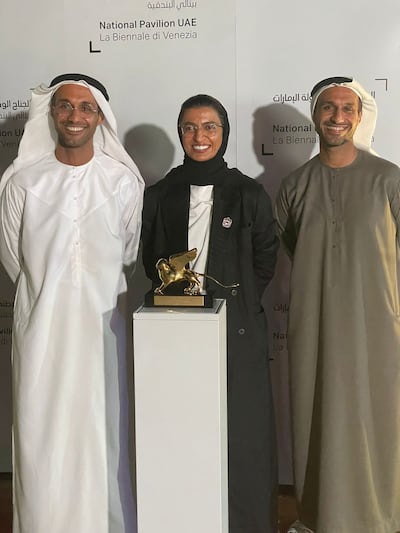
Sabkhas, bin Shabib says, can be regarded as a barometer to the Earth’s health; an indicator of climate change much like coral reefs and the Arctic.
But they also present a possible solution to climate change, specifically when planted with mangroves, which are locally referred to as Al Gurm.
“The long-term sequestration of carbon by one square kilometre of mangrove area – common to the UAE’s wetlands – is equivalent to that occurring in 50 square metres of tropical forest,” the brothers write in the book’s introduction.
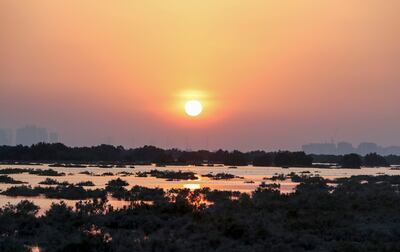
“So if you grow mangroves along the Gulf, you could produce several Amazon rainforests,” bin Shabib says. “Think of the benefits that can do to the planet.”
The second section of the book explores the history of salt in architecture, starting from the 10,000-year-old Egyptian city of Siwa, one of the first recorded towns settled on a sabkha, to US modernist Philip Johnson’s use of salt-glazed bricks, and Christo and Jeanne-Claude’s proposal for The Mastaba.
Segmenting the two sections is a chapter on the Wetland exhibition at the National Pavilion UAE, which was curated by Wael Al Awar and Kenichi Teramoto.
In their initial proposal, the architects were looking to find a way to extract salt from brine in desalination plants. Their research eventually lead them to propose an environmentally friendly alternative to Portland cement, the most widely used cement mix in the industry.
The bin Shabib brothers helped shape the final proposal at the Venice Biennale by pointing towards the UAE's sabkhas as troves that could be studied for sustainable urban development.
"A broader question of our relationship with our ecological topology was needed," Bin Shabib says.
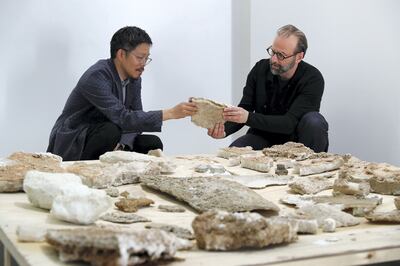
The bin Shabib brothers set out to explore the country’s sabkhas, documenting “how alive and how beautiful they are”.
They then researched at Kew Gardens in London, where they found that “every piece of specimen and plant in the mangroves of the UAE had been documented since the time of [Wilfred] Thesiger”, the British explorer who famously journeyed through the country in the mid-20th century.
“They were significant archives that were waiting to be extracted,” bin Shabib says. “It’s kind of like the archives themselves had been saying 'we’ve been waiting for you to come and access this'. So we took these, and we produced this anthology, this way of allowing you to be immersed in this database, in this history.”
The Anatomy of Sabkhas also highlights an interplanetary connection of the sabkha, bringing attention to a recent exploration of Mars’s Gale Crater, created three billion years ago from a meteor impact, which revealed salt deposits on the Red Planet.
“The salt crusts of the discovered sabkhas are relics deposited by ancient evaporation, remnants from a wetter period in the past buried by the shifting sands of the present,” the book reads.
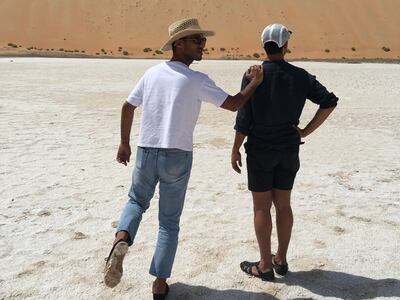
Among the most important historical contributions of The Anatomy of Sabkhas are the oral testimonies transcribed towards the end of the book. These include an entry by Mama Moza Al Dowais, grandmother of the bin Shabib brothers. This lists the families who used to reside in the partially-demolished houses along Dubai's historic Deira and Shindagha areas.
“No one knew whose houses were originally there,” bin Shabib says, also noting that the publication of the testimony presents, for the first time, a referable and achievable document on the names of the families who lived in the area.
“They were next to sabkhas,” bin Shabib says. “Sabkhas were their playground. Part of their daily life; they would see it daily. Step on it daily.”
The Anatomy of Sabkhas is just the latest printed effort by the bin Shabibs, who have released several joint publications in the last decade.
Even their relationship to the Venice Biennale goes back to 2009, when the brothers produced the publication to mark the UAE’s first participation in the event. For Expo 2015 in Milan, the brothers created an exhibition for the National Pavilion UAE that looked at how dates, the palm tree and the falaj system produced a social and environmental ecosystem.
Brownbook, however, is perhaps their most recognisable output. Published between 2007 and 2018, the magazine featured artists and innovators from the region, and “focused on casting a light on the unsung cultural revolutionaries of the Middle East”.
In its design, The Anatomy of Sabkhas pays tacit homage to the publication, bin Shabib says, because the book was scaled in exactly the same dimensions as the magazine.
He says his fight for sabkhas is only beginning with the book’s publication. As recipients of the Golden Lion, he and his brother aim to use the platform and attention to raise awareness of this misunderstood landscape – with a series of planned lectures, talks and possibly new initiatives.
“We want to take this and go to Harvard, AA [the Architectural Association School of Architecture], MIT [Massachusetts Institute of Technology],” he says. “We want to show them the data, what sabkhas can do for the research into carbon sequestration.
“This is our excuse to get us through the door. We want to change how people view not only sabkhas, but nature as a whole. Nature is our client.
"I like thinking in those terms because it puts us on the defence; right now we’re on the offence. The client is not happy with what we’re doing. As designers and architects, we should be looking at things through that prism.”
